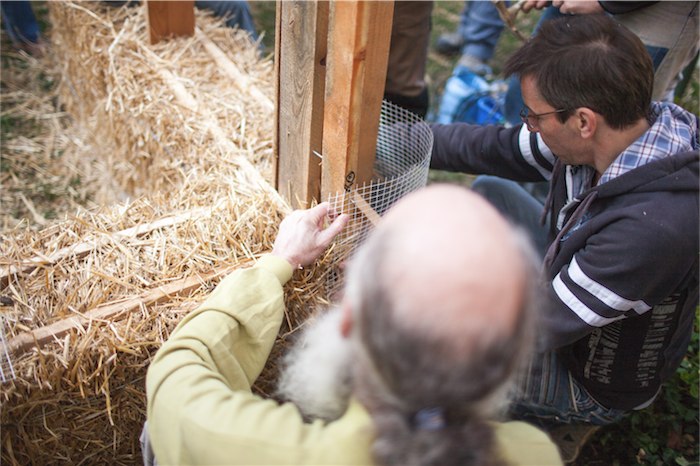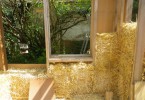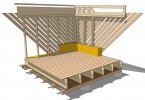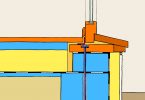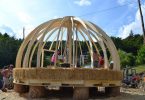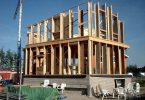 Objectives:
Objectives:
Trainees …
- know the different hybrid construction techniques and when to use them
- know different structural options
- know the dis-/advantages of every solution
- Are aware of health and safety issues related to co-workers, building site, machinery, equipment, PPE (personal protective
equipment) and the issues specific to work with straw and straw bales. - Can organize building sites at all stages (i.e.: take responsibility to leave the building site rain- and windproof, keep strawstacks fireprotected, remove loose straw after work,…).
- Can take responsibility for the requirements of straw building in a “normal” building routine
- Know the details (window, roof junction,… ) for hybrid construction techniques.
Methods:
- lecture/talk
- explanations
- practice
Theory:
- different structural options of hybrid construction techniques and their characteristics and bale requirements
- fixing bales with different techniques
- compressing bales with different systems
- advantages and disadvantages of hybrid construction techniques
- details of connections: foundation, corners, windows and doors, roof, etc.
- preparing different surfaces for plastering
Practice/Task:
- working groups
- preparing wooden frames and structures
- infill straw bales in standing position (“on edge”)
- compress the bales with different techniques
- fixing the bales in the construction
- airtight/windproof installation of a window
- shaving the bales, if necessary
- preparing bales/boards for plastering
Materials/Documents: U2 S3 – Session Plan
Training Time: 1 day
